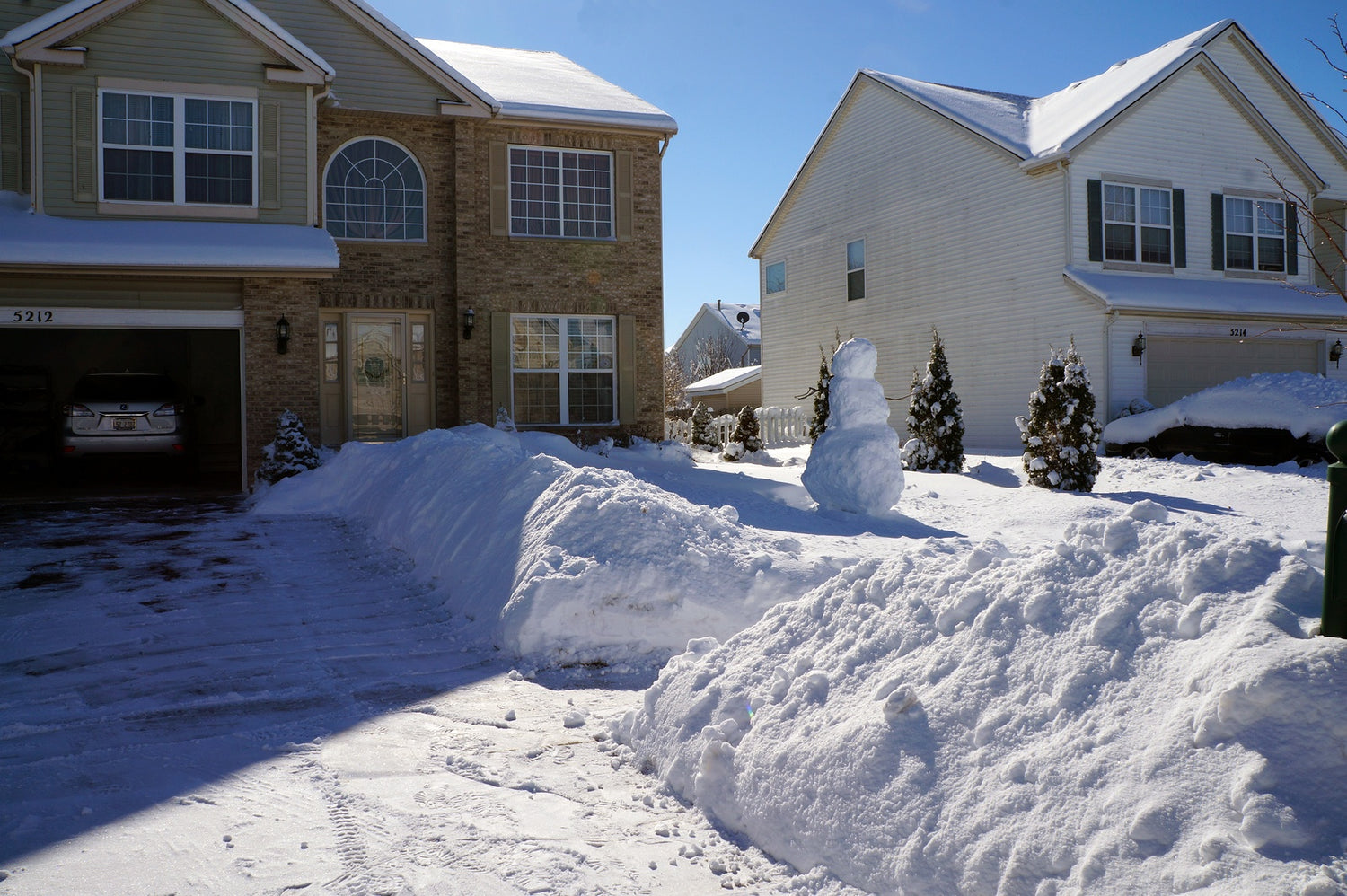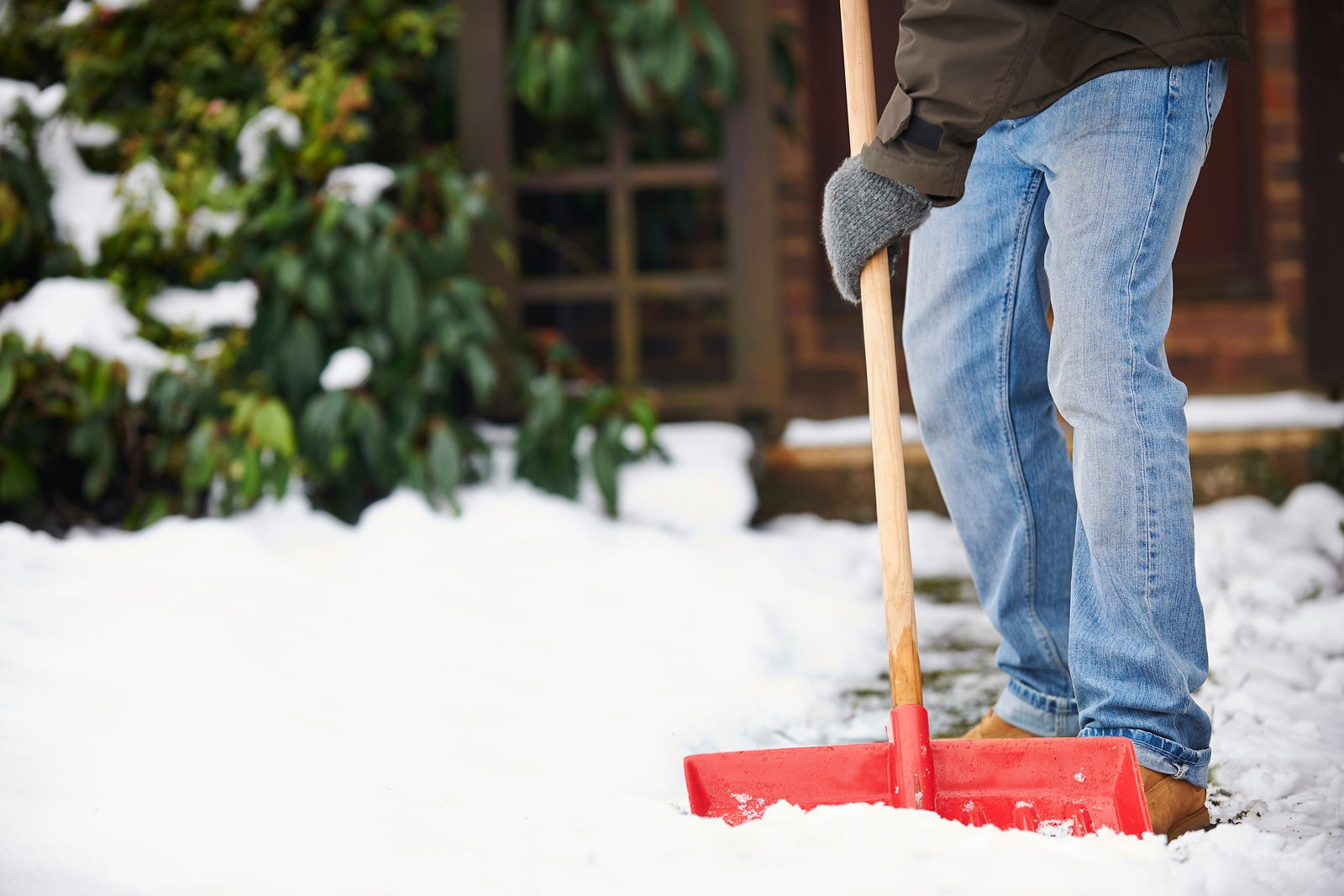
If you live in a snowy climate and routinely park your vehicle inside a garage, you know that winter weather impacts more than just your driveway and outdoor pavements. It also affects garage flooring by leaving salt stains and other marks on the concrete surface.
Below, we take a look at how de-icing agents get inside your garage and do damage to the concrete flooring, how to repair the damage already done, and how to prevent the damage from recurring.
How de-icers damage your garage floor
Calcium chloride, rock salt, and other municipal de-icers make it possible to drive on a highway in a matter of hours, instead of days, after a major winter storm. While a great convenience, these “road salts” also have their ill effects, however. As you drive, they attach themselves to the treads of your tires, splatter up and hit the “vulnerable underbelly” of your vehicle, and remain there until drying enough to fall back down.
Thus, you inadvertently bring in de-icing salts with you when your park your car inside your garage. These salts contact your garage floor and seep into (or get rubbed in by tires and feet) the porous surface of your concrete.
Once inside, salts draw extra moisture into the concrete and saturate it. When the temperature in your garage drops too low, this moisture freezes despite the presence of de-icers, creating upward and inward pressure as the freezing water expands and leading to flaking and even cracking of the garage floor. The more the temperature fluctuates during the winter, the more frequently this freeze-thaw cycle will take place.
In addition, when the moisture trapped inside your garage floor finally evaporates, it can leave unsightly salt stains behind.
How to repair your garage floor after de-icer damage
To remove any salt stains left behind (normally in the spring when the moisture has evaporated from the concrete), first, thoroughly clean the garage floor. This will expose all areas that need attention. Then, mix a cup of vinegar and a little dish soap into a gallon of water, and wet and scrub each stain with a tough-bristled brush. Afterward, take up the water puddle with a dry mop or a wet-vac. Finally, rinse away the soapy residue with a little water.
Be aware that if you rinse with water before using the wet-vac or mop, or if you power-wash, the de-icing salts may get pushed back into the pores of the concrete and continue to give you trouble later on.
You can also buy ready-made products to clean salt stains rather than using the home-made vinegar-water-soap solution. And for especially difficult stains, you may need to use a weak hydrochloric acid solution (1 unit acid per 20 units water).
Finally, you can repair flaking with a polymer-modified cement, which will create a stronger bond and a cleaner finish than can ordinary cement patch. For cracks, look for an epoxy, poly-urea, or poly-urethane-based crack filler to ensure it can be sanded down flush to the floor, painted, and will not shrink (water or latex based crack fillers cannot be sanded, cannot be painted, and will ultimately shrink and re-expose the crack).
How to prevent garage floor damage from recurring
There are a number of ways to help prevent de-icers from getting on and into your garage floor and damaging it. First, you can apply a "penetration sealer" that will keep any salts that get on your floor from seeping inside. A topical sealer across the whole garage floor and the use of ordinary floor mats can also help.
And, simple steps like cleaning your garage floor immediately after a storm or after driving out on a salty road, and rinsing off your tires using a water hose before entering the garage, will also help.
However, you could also use a driveway-grade snow-melt mat inside your garage and/or out on your driveway to keep snow/ice melted without resorting to the use of de-icing salts. It is a shame to think that a portion of the salt crystals damaging your floor came not from the highway but from your driveway (and that you put them there yourself to melt the snow and ice!) You might also eliminate use of snow-melting salts by installing a heated driveway, but that would be a more expensive route to go and could require you to tear up your existing pavement.
After de-icers have already damaged your concrete garage floor, you can learn how to make the necessary repairs and save the floor, but to prevent the damage from returning every winter, you need to give you floor extra protection and minimize use of de-icers at home in your driveway.

